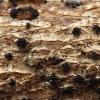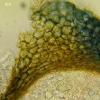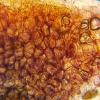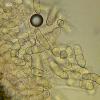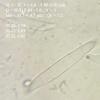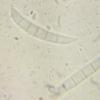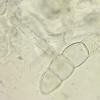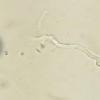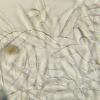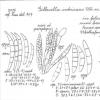
09-11-2025 13:20
Hello.A tiny ascomycete, appearing as erupting gra

08-11-2025 00:29
 Francois Guay
Francois Guay
I found this species in Quebec, Canada, on herbace

04-11-2025 09:07
Hello.A suspected Hymenoscyphus sprouting on a thi

04-11-2025 12:43
 Edvin Johannesen
Edvin Johannesen
Hi! One more found on old Populus tremula log in O

03-11-2025 21:34
 Edvin Johannesen
Edvin Johannesen
These tiny (0.4-0.5 mm diam.), whitish, short-stip
Gibberella sp? on Acer.
Mirek Gryc,
22-03-2021 14:23
Hi.
Many times I found species from this kind but have usually missed conidiophores. This time, however, both forms occur at the same time almost in every sample collected so I think conidiophores belongs to this species.
I looked through all the available articles on Gibberella but nothing could match. Finally, I found a drawing of Gibberella intricans, Wollenweber, H.W. Fusaria Autographic Delineata, EDN 3: I, 660-1100: 810 (1930).
In principle, all features match my collection.
Initially measured the spores overripe, I did not fit their width. I found a less mature fruiter whose spores with sizes correspond to those from the engravings.
Relevant note is that the spores are in most 3-septata (rarely 5-septata).
Spores;
(27.7) 27.8 - 31.2 (31.5) × (5.3) 5.9 - 7.3 (7.5) µm
Q = (3.9) 3.94 - 5.27 (5.3) ;
Me = 29.1 × 6.6 µm ; Qe = 4.4
Conidia
31.3 - 37.2 × 4.6 - 4.89 (4.9) µm
Q = (6.8) 6.84 - 7.6 ;
Me = 33.7 × 4.7 µm ; Qe = 7.2
However, I am wondering a very poor reaction to KOH?
What is your opinion on it?
greetings
Mirek
Bernard Declercq,
22-03-2021 17:49

Re : Gibberella sp? on Acer.
Hi Mirec,
This is clearly a Fusarium ss. str.(syn.: Gibberella).
Compare with lignicolous species Fusarium lateritium Nees, ascospores as well as 3(5)-septate conidia seem to match.
Bernard
This is clearly a Fusarium ss. str.(syn.: Gibberella).
Compare with lignicolous species Fusarium lateritium Nees, ascospores as well as 3(5)-septate conidia seem to match.
Bernard
Mirek Gryc,
22-03-2021 19:43
Re : Gibberella sp? on Acer.
Hi Bernard.
Again, I had to look a bit of literature about it and compare my.
It seems to me that you are right. Features very good fit to the genre that you offered.
Thank you very much
Mirek
Again, I had to look a bit of literature about it and compare my.
It seems to me that you are right. Features very good fit to the genre that you offered.
Thank you very much
Mirek

